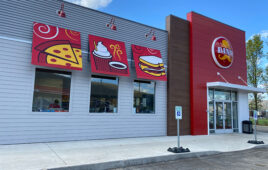 Merger and acquisition activity continues to dominate industry headlines as larger companies with deeper pockets pay, and in some cases overpay, for smaller companies. There are many questions we can ask about the current situation, but none is more important than, “What impact is this having on employees?”
Merger and acquisition activity continues to dominate industry headlines as larger companies with deeper pockets pay, and in some cases overpay, for smaller companies. There are many questions we can ask about the current situation, but none is more important than, “What impact is this having on employees?”
It’s hard enough to get employees. Is acquisition activity hurting our best employees? It’s a fair question. The honest truth is that buyouts, mergers and takeovers have been going on for as long as there have been business ventures.
Here, though, is a living example that illustrates best why business owners are willing to take risks to get the biggest rewards. In 1924, movie mogul Marcus Loew bought out Metro Pictures, Goldwyn Pictures and Louis B. Mayer Pictures to form MGM. He paid a combined total of $8 million to form the motion picture conglomerate, which is worth about $108 million in today’s dollars. In 2004, Sony came in and purchased MGM for more than $5 billion. The deal could have easily failed, but instead, leadership and vision helped create a highly successful company.
There is a lot of money floating around our industry now. That enormous $5 billion deal in 2004 is trivialized when you consider that $4.6 trillion was spent on acquisitions in the U.S. last year alone.
Acquisitions help companies gain efficiencies. As a result, some employees will lose their positions due to redundancies, especially in areas like payroll, human resources and IT. Plus, areas like payroll at the acquiring company can often gain efficiencies and save lots of money by combining payroll into one central location. It’s hard not to see the logic in wanting to get bigger.
Remembering the Front Line
While some office and management positions might be reduced or eliminated, these employees often receive a generous compensation package. Not always, but the good companies are careful to take care of their people. At the very least, compensation should be enough to bridge an employment gap.
In the case of c-stores, the store-level staff must be a priority. All the employees who work in the stores should be able to keep their jobs because each location has to have a certain number of employees to serve its customers in a prompt, friendly and professional manner. This should be communicated to store teams early and often so they don’t leave ownership uncertainty for the first competitor that comes offering a signing bonus.
While good companies love growth, understand that good companies also like to promote from within. They also like building and acquiring new stores, so they can’t afford to lose good people. Company acquisitions could actually mean new opportunities for your store staff to get promoted to manager, district manager and regional manager positions, but you have to remember to communicate this.
Another key point you want to communicate is that things will change, but emphasize that they will change for the better. Some company leaders insist on saying, “Nothing is going to change!” Here’s a hint: No one believes that, especially frontline employees. Everyone knows a lot is going to change, especially after a company spends millions or billions of dollars to acquire a new business.
Chances are, most of those changes have merit. Understand that the quicker and better you adapt, the more likely the company is to succeed. Embrace the changes, and take advantage of this opportunity to improve. Just remember to communicate with the team so you don’t lose your best employees.
 Jim Callahan has more than 40 years of experience as a c-store and petroleum marketer. His Convenience Store Solutions blog appears on CStoreDecisions.com. He can be reached at (678) 485-4773 or via email at [email protected].
Jim Callahan has more than 40 years of experience as a c-store and petroleum marketer. His Convenience Store Solutions blog appears on CStoreDecisions.com. He can be reached at (678) 485-4773 or via email at [email protected].




